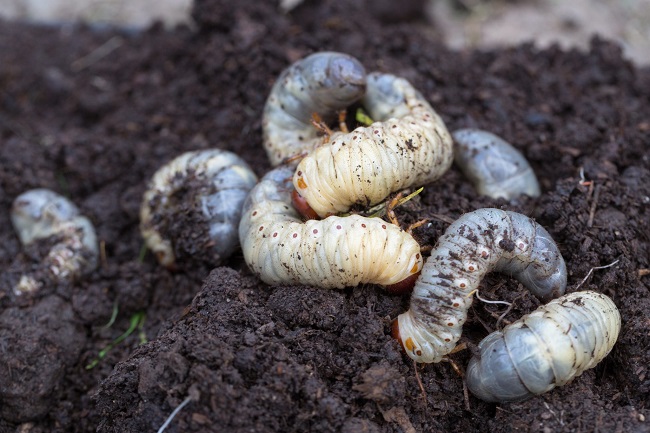
Lush green lawns are a source of pride for homeowners, but they can come under attack from a common underground menace: grubs. These white, C-shaped larvae of beetles, such as Japanese beetles, can wreak havoc on your lawn, causing brown patches and weakened turf. In this article, we will explore the damage grubs can do to your lawn and provide effective methods for eliminating them.
The Damage Grubs Cause
Grubs primarily feed on grassroots, which are essential for the health and vitality of your lawn. As they devour the roots, they disrupt the grass’s ability to absorb water and nutrients, resulting in visible damage.
Identifying Grub Infestations
Brown Patches
Irregular, brown patches of dying grass are a telltale sign of grub damage. These patches often start small and can quickly spread if left untreated.
Loose Turf
Infested areas may feel spongy or loose underfoot due to the grubs’ feeding activity, which weakens the root system.
Increased Pest Activity
Grub-infested lawns can attract other unwanted pests, such as raccoons, skunks, or birds. These animals dig into the turf, seeking the grubs as a food source, further exacerbating the damage.
Eliminating Grub Infestations
Inspection
Start by inspecting your lawn for signs of grub activity. Lift sections of the turf and look for white, C-shaped larvae beneath the surface. If you identify more than five grubs per square foot, treatment may be necessary.
Biological Control
Milky spore disease, a naturally occurring bacterium, is an effective biological control method for eliminating grubs. Apply milky spore powder or granules according to the package instructions. The spores will infect the grubs, causing disease and reducing their population over time. This method is safe for humans, pets, and beneficial organisms.
Beneficial Nematodes
Beneficial nematodes are microscopic worms that parasitize and kill grubs. They are commercially available and can be applied to the lawn following the package instructions. Keep in mind that nematodes require moist conditions, so water the treated area before and after application.
Chemical Insecticides
If biological control methods do not provide sufficient control, chemical insecticides can be used. Choose a grub control product labeled specifically for lawns and follow the instructions carefully. Apply the insecticide during the peak feeding period of the grubs for maximum effectiveness.
Overseeding and Lawn Care
After eliminating the grub infestation, repair the damaged areas by overseeding with appropriate grass seed. Proper lawn care practices, including regular mowing, adequate watering, and fertilization, will help restore the health and resilience of your lawn.
Grub infestations can cause significant damage to your lawn, leading to unsightly brown patches and weakened grass. By promptly identifying the signs of grub activity and employing effective control methods, you can protect your lawn from further damage and restore its vitality. Remember to choose the appropriate control method based on the severity of the infestation and prioritize environmentally friendly options like biological controls whenever possible.
Related Articles & Free Email Newsletter Sign Up
How Organic Pesticides and Beneficial Insects Can Combine to Eliminate Pests
How to Control Earwigs in Your Garden and Yard




Comment here